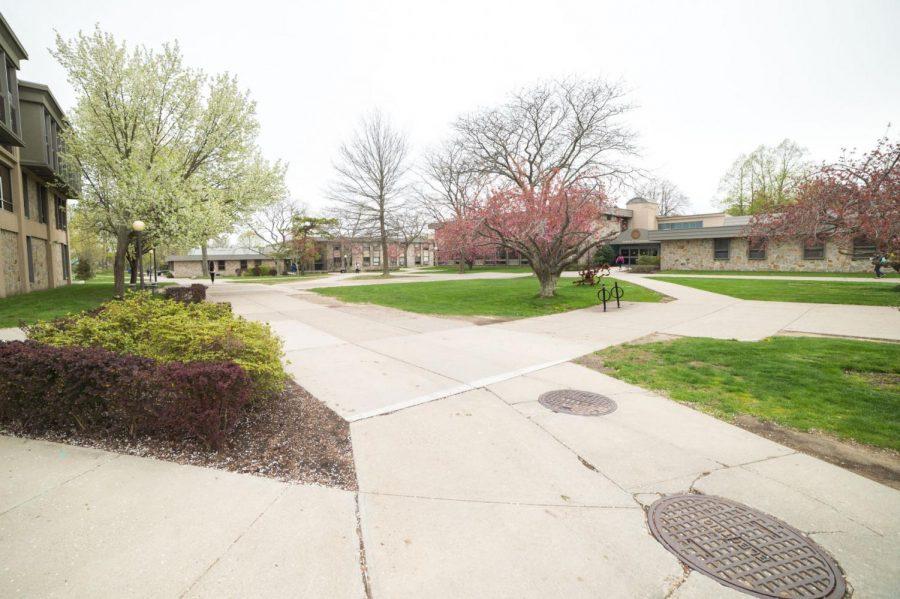Engineering building follow-up
Jacquelyn Voghel
Editor-in-Chief
As the proposed new School of Engineering, Computing, and Construction Management (SECCM) building awaits Board of Trustees approval, details of the project have raised questions and concerns among some members of the campus community.
As previously reported in The Hawks’ Herald, the project is tentatively projected to begin construction in Sept. 2017 and open for student use in Jan. 2019.
Covering 28,325 square feet and standing at three stories high, the structure is planned to reside between the current SECCM building and the Gabelli School of Business (GSB). Its financial plan, however, still needs approval before official preparation can begin.
Jonathan Bailey-Francois, a sophomore majoring in architecture, has been staunchly opposed to many decisions made in planning the new SECCM building.
“I am in favor of the building; I am not in favor of the site,” he said. “The site is the one that’s the most damaging to both me and the students and the overall campus.”
With the building’s size and location, Bailey-Francois expressed concerns that that the structure itself, along with its construction site, may block the university’s bridge view, remove trees on an arboretum-designated campus, reduce parking spaces, and limit accessibility to the elevator located in FCAS.
As an alternative location, Bailey-Francois suggested the plot of land behind the Gabelli School of Business (GSB), which he stated will cause less obstruction of the bridge view and take down fewer trees.
Responding to concerns about sustainability and accessibility, Robert Lake, director of capital projects and planning, told The Hawks’ Herald that “access to the FCAS elevator will be maintained at all times.”
“The project team is committed to [accessibility] in that area specifically,” Lake said. “Our ultimate goal is to provide improved [accessibility] on every project we embark upon.”
The land next to the business school, Lake said, has meanwhile already been set aside for a “possible expansion for GSB which will need more space in the near future,” or other tentative projects such as student housing or an expansion to the fine arts program.
Unlike the planned site for the SECCM, Lake additionally stated that the site behind GSB “was not pre-blasted,” unlike the currently planned location, and would therefore be “very costly” to use for the new SECCM building.
In accordance with the university’s arboretum status, Lake also maintained that two trees will be planted for each tree that will be cut down. While “student and staff parking will be impacted,” Lake stated that a university parking committee is being tasked with finding other options.
Aside from the project’s logistics, Bailey-Francois expressed disappointment in a lack of communication between university officials and students.
Bailey-Francois initially heard about the project at a Student Senate meeting he attended, and after speaking with fellow students, stated that most were either unaware of the project’s existence or unsure of its details.
“I like being on top of things to understand what’s going on, and I wasn’t on top of that… I had to hear about it secondhand, not from the school but from a Student Senate member,” Bailey-Francois said.
Freshman Micaela Supsky was also surprised to hear that a new building is currently being planned.
“I think that’s strange that people haven’t heard about it, especially if it’s supposed to start in September,” Supsky said.
Meanwhile, students are well-informed about the new building in the SECCM, said senior engineering major Nicole Capistran. The topic often comes up among students and faculty, and as an engineering ambassador, Capistran also tells incoming and prospective students about the building at Accepted Students Day and open houses.
“I think [the project] is exciting,” Capistran said. “I’m a senior, so I’m sad I won’t be able to see it.”
Bailey-Francois ultimately feels that the university is not listening to his concerns, stating that he was disappointed in the “miscommunication” from the dean and staff of SECCM.
Robert Potter, the dean of SECCM, could not be reached for comment.
“Every one of us are clients of the school,” Bailey-Francois said. “So if they lose clients because we are unhappy about the decisions they make, it’s really up to them… Should they change what they’re doing, or should they change what we believe in?”

